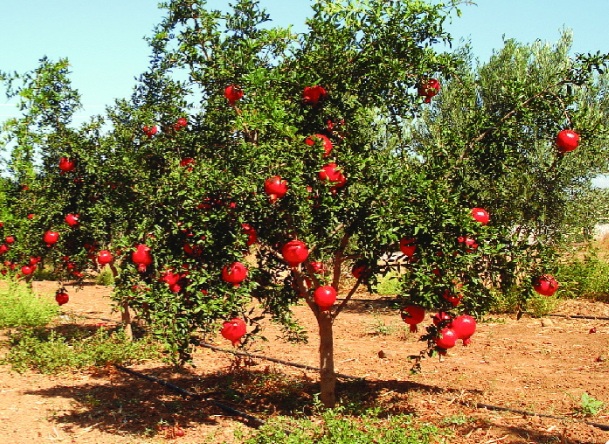Pomegranate are attractive to all pollinators, with glossy leaves, red-brown bark, and scarlet red, tube-shaped flowers. Best of all it produces a delicious edible fruit and drink that goes down at treat at Christmas time!
The fruits have a red, leathery rind, and the sweet, jewel like seeds are full of antioxidants having many health benefits.
Pomegranate is perfect for the sunniest and warmest locations in the garden, getting at least six hours of full sun daily.
They can range from a dwarf shrub, which will grown up to 3 feet, to a tree of up to 30 feet in height!
The pomegranate tree is drought tolerant, although irrigation will be required for fruit production. Water deeply every two to four weeks during the dry season.
However, be careful not to overwater, as excess water can lead to a poor harvest and the fruit will also be more prone to splitting.
Plant in late Spring after any chance of frost, in well-draining soil. It’s not too picky on soil, as its able to thrive in a wide variety from acid loam, preferred to poor quality alkaline types.
Fertilise in November and March in the first two years of planting, after which fertiliser is not required, as too much can result in a poor harvest.
It takes around two to three years for a pomegranate tree to produce a proper harvest.
The fruits are ready to be picked when the colour has developed, into a matte rather than glossy sheen and change from a round to a more hexagonal shape, making a metallic sound when tapped.
Always use a pair of pruning shears to cut the stem above the fruit, instead of pulling it off, to avoid damaging the fruit.
Regular pruning of branches, especially in the first few years, will help to encourage healthy new shoots develop and a more abundant harvest. Once established, simply prune any dead branches.





